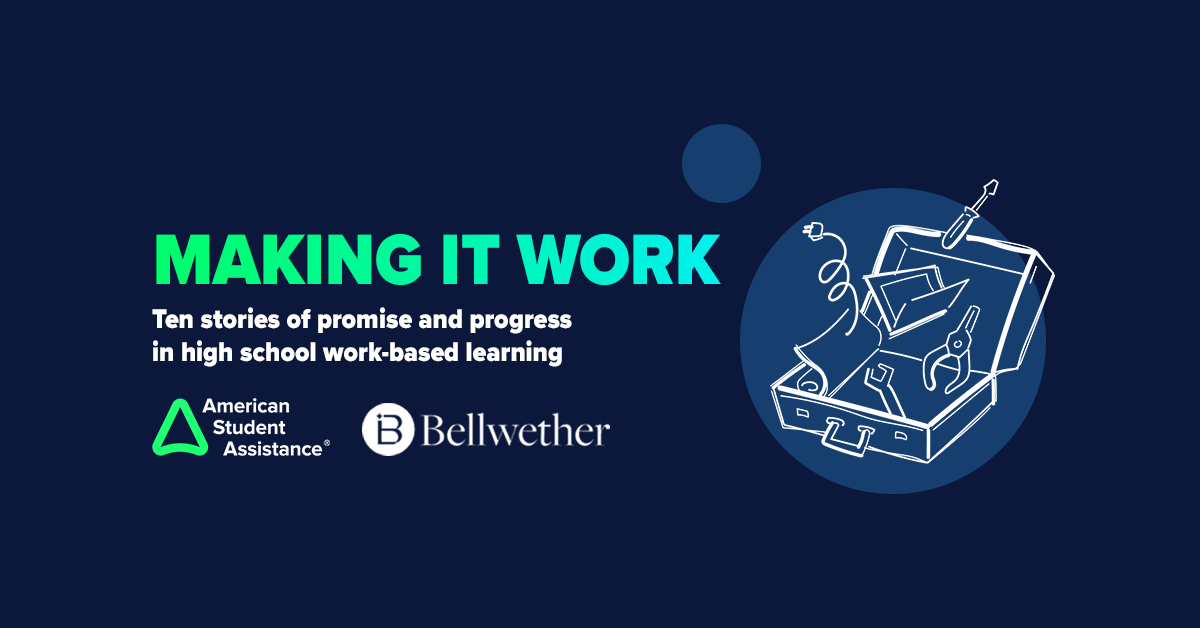ASA is committed to increasing awareness of state policies and practices that are successfully encouraging and supporting high-quality work-based learning experiences at the high school level.
Our recent guide, High School Work-based Learning: Best Practices Designed to Improve Career Readiness Outcomes for Today’s Youth, highlights examples from states across the country that are leading the way in making career-connected learning opportunities, like internships and pre-apprenticeships, more broadly available for youth under 18.
In a recent blog post, we explored the different strategies states employ to ensure all students, whether on a career and technical education path or not, are eligible to participate in work-based learning during their high school years. Now we will examine how states address specific barriers underserved students face in accessing work-based learning.
Our nationwide audit of state policies around high school work-based learning shows that most states have not developed explicit policies or programs to ensure access and success for high-need students. But there are a few that stand out as positive models.
Georgia’s Great Promise Partnership, for example, is a public-private partnership that supports at-risk students to stay in and complete high school while simultaneously developing real-world job skills and experiences through work-based learning opportunities. In Illinois, state law requires the Department of Children and Family Services to provide eligible youth an apprenticeship stipend to cover the costs associated with entering an apprenticeship, including costs such as tuition for classes, work clothes, or occupation-specific tools. Also in Illinois, the Youth Apprenticeship program provides students with wraparound supports, like case management and counseling, and holistic upskilling in technical and soft skills.
Other states provide paid internship opportunities, a crucial benefit for students who must help financially support their families. Rhode Island has launched an experiment to offer paid virtual work-based learning opportunities year-round, provided in an after-school format or as a supplement to advisory periods. “Many employers think students can only participate in a program part of the year, but year-round programming is an especially critical element of learning for opportunity youth,” explains Nina Pande, Executive Director of the statewide career readiness intermediary Skills for Rhode Island’s Future (SkillsRI).
“As we ran focus groups in many of Rhode Island’s urban core schools, we heard that many students, especially in the wake of COVID, aren’t showing up during school traditional hours because they need to work to support their families. If we can build year-round work-based learning opportunities, connecting students virtually to local employers while they’re physically at school, we can help them move towards economic mobility while still learning in their areas of interest. There’s no better victory to strengthen our education system, meet families where they are, and make sure students are earning and learning – not working instead of learning.”
To better help English Language Learners, Rhode Island is also offering bilingual classes in Excel and Power BI to make sure students have the knowledge of the programs they will use to do their work, and regularly run bilingual focus groups at three of the state’s priority schools to better understand students’ needs, challenges and interests. (Listen to the Coalition for Career Development Center podcast with Nina Pande, “A State-by-State Analysis of High School Work-based Learning Policies,” to learn more about Rhode Island’s work-based learning initiatives.)
In Minnesota, the Department of Education’s WBL reference guide provides for six types of work experience programs, four of which are explicitly tailored to disadvantaged and handicapped students. New York’s Work Experience and Career Exploration Program is designed for at-risk students ages 14 to 15; its community-based WBL programs are particularly suited for students with disabilities and include explicit guidance and considerations; and its Summer Youth Employment Program (SYEP) allocates funds to each district to provide summer employment for youth ages 14 to 20 who are Family Assistance or Safety Net Assistance recipients, or eligible under the Temporary Assistance for Needy Families (for those with an income level that is at or below 200% of the federal poverty guidelines).* Texas, meanwhile, uses dedicated funding to ensure lack of access to transportation is not a barrier to student participation in work-based learning.
In the wake of COVID, more students, particularly the most vulnerable, are disengaging with school and having a harder time making the transition to postsecondary education and career. We hope more policymakers across the country prioritize work-based learning for all students as a successful strategy to keep students engaged, connect their learning to the real world, and open pathways to education beyond high school and career.
As of September 2022, WECEP will be consolidated into New York’s existing General Education Work Experience Program: http://www.nysed.gov/memo/career-technical-education/updatesregistered-work-based-learning-wbl-programs




